Shiozake is homemade salted salmon. It is most famously served as Japanese breakfast – or in a bento box for lunch. With only three ingredients – and a few easy steps to follow – you’ll be eating restaurant quality Japanese food at home with minimal effort. Bonus: this Japanese salted salmon also makes the best onigiri filling!
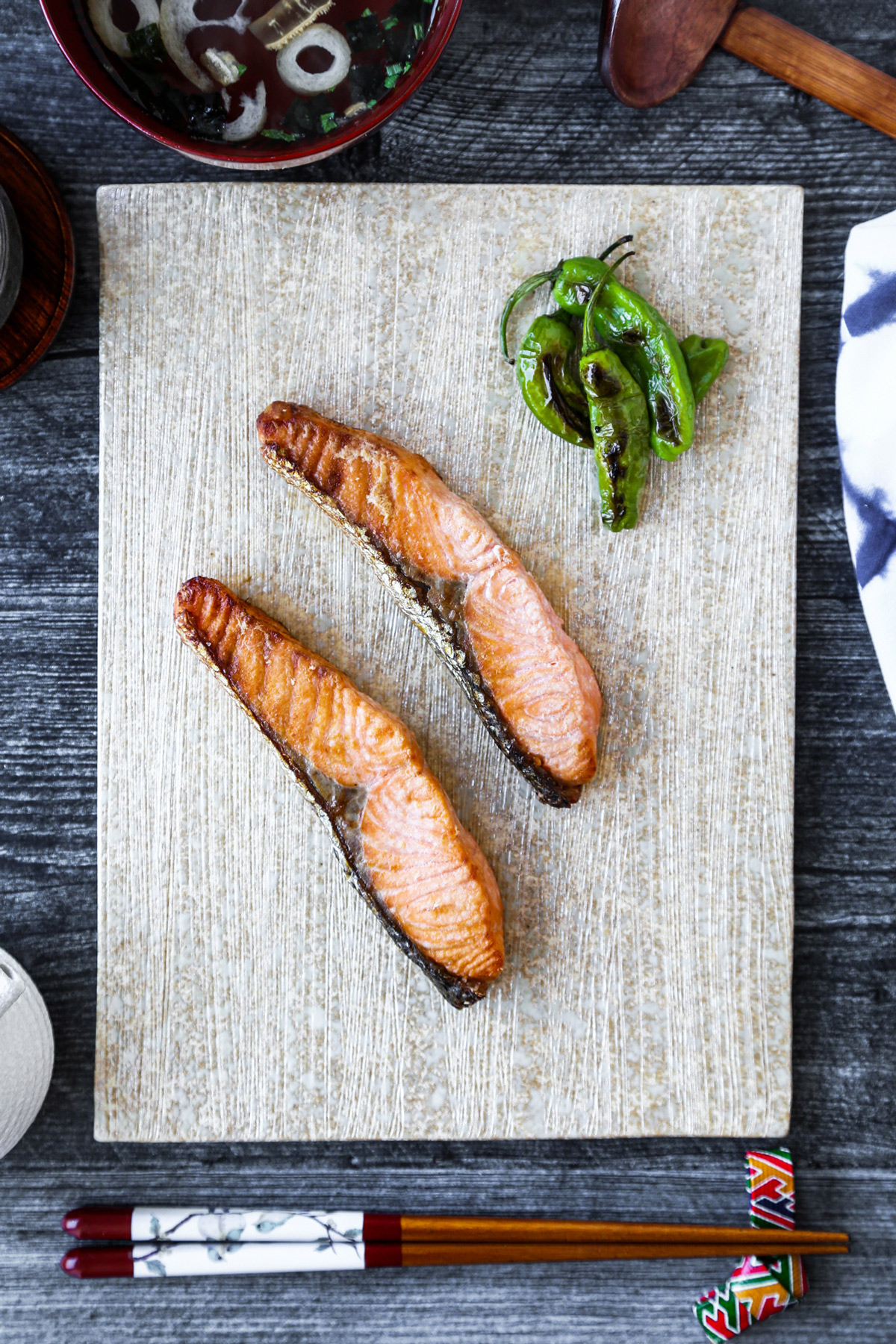
Have you ever had Japanese breakfast?
While many Japanese breakfast foods are fairly similar to their morning counterparts in the West (like the ubiquitous fried egg, or a Japanese omelette called tamagoyaki), many foods differ greatly.
Miso soup, pickled vegetables, seaweed salad and fermented soybeans (natto) are common items served both at home – and in Japanese hotels, many of which specialize in elaborate buffet-style breakfasts.
And one of my all-time breakfast favorites is a Japanese salted salmon called shiozake.
Wait, fish for breakfast? When it’s shiozake, the answer is a resounding yes. Make this Japanese salted salmon a part of your traditional Japanese breakfast!
Table of contents
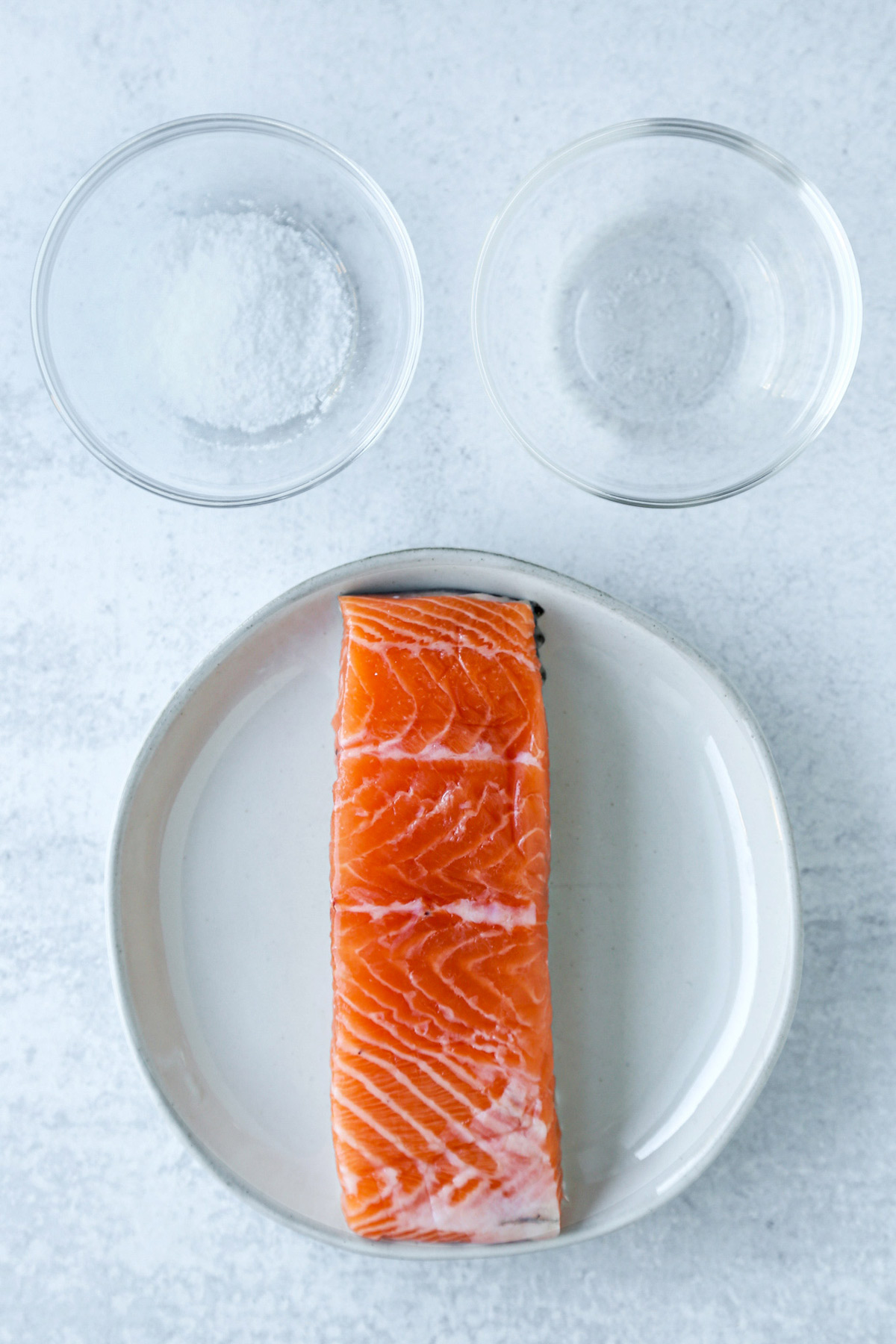
What is Shiozake?
Shiozake is Japanese salmon that is marinated in a combination of sake and salt – and is then quickly grilled. It is typically served for breakfast in Japan, or in a bento box lunch – or as an ingredient in onigiri or ochazuke.
Since the salmon fillets are coated in salt for a couple of days before grilling, you could almost say that the salmon is partially salt-cured – albeit cured to a lesser extent than something like smoked salmon or beef jerky.
The skin is left on the salmon fillet – and grilling or broiling on high heat renders the skin crispy and delicious.
Salmon in Japanese is sake (not to be confused with the rice wine of the same name). And shio-yaki means salt-grilled. Therefore, shiozake is sort of a mashup that loosely translates to salt-grilled salmon.
You’ll also see this Japanese salted salmon referred to as shiojake in Japan.
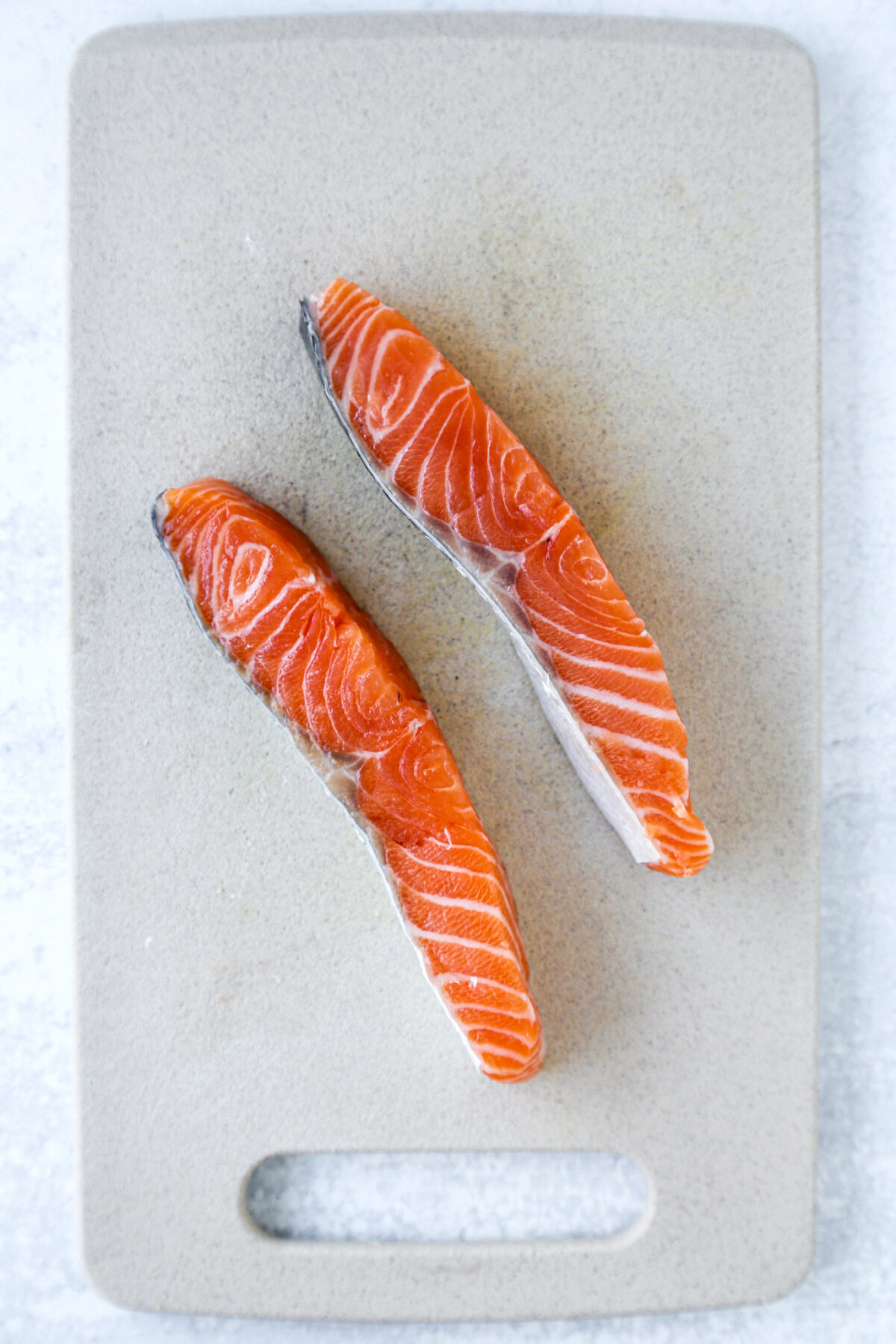
Japanese Salted Salmon Ingredients
Scroll all the way down for the full recipe.
- Salmon: You’ll want two 8-ounce boneless fillets. Make sure to leave the skin on the fillet. The skin will crisp up so nicely under the flame of the broiler and adds great texture to the completed dish.
- Sake: This is Japanese rice wine. Aside from tenderizing meat, sake also tends to neutralize some of the overt fishiness when used with seafood. Although the alcohol content is the same as drinking sake, most cooking sake has salt added – which allows it to be sold as a cooking ingredient rather than an alcoholic beverage. You’ll only need about a tsp for this recipe. You can find sake at many Asian grocery stores, or you can grab cooking sake here on Amazon.
- Kosher Salt: Unlike the small grains of regular table salt, kosher salt has large crystals. This renders it the perfect salt grain to use when cooking because it is tough to over-salt your food as you might with an equal amount of table salt. For example, in this recipe you’d use one-and-a-half teaspoons of kosher salt – versus a mere 3/4 teaspoon of regular table salt. Flakey sea salt would also work well in this Japanese salted salmon recipe.
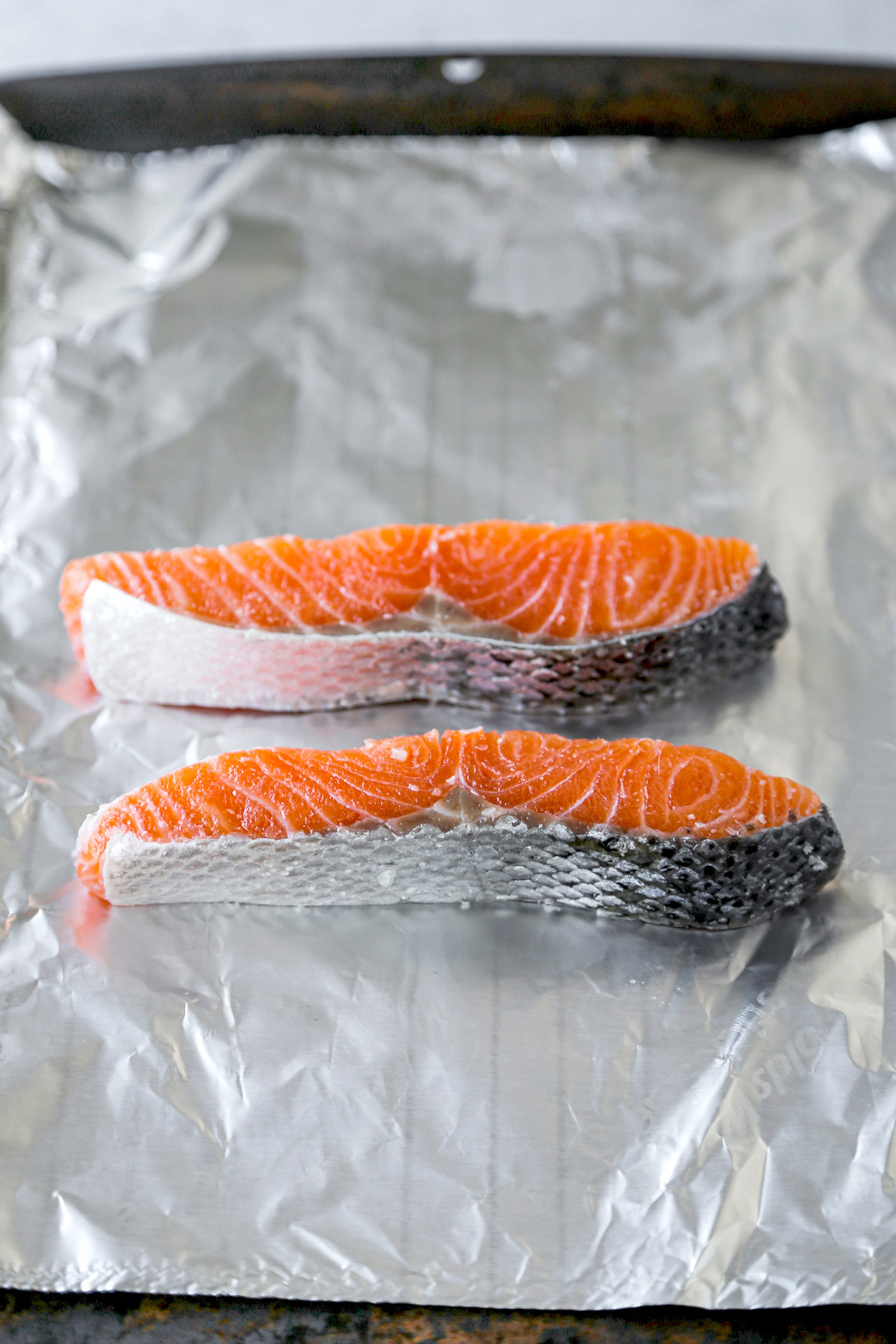
How to Make Salted Salmon
- Gather all of your cooking tools and ingredients.
- Place the salmon in a glass container and pour the sake over the fish. Grab each salmon fillet and gently massage the cooking sake into the skin and flesh.
- Let the fish rest for 5 minutes – then pat each fillet dry with a paper towel. You want to eliminate any excess moisture.
- Next, sprinkle equal amounts of kosher salt (or sea salt) on all sides of the fillets. Remember to include the skin!
- Then cover the container with a lid and place in the refrigerator for at least 12 hours – and up to 36 hours.
- When you’re ready to cook, move one oven rack to the top so that it’s sitting directly under the broiler. Cover a rimmed baking sheet with non-stick foil and lay the salmon fillets on top.
- Turn on the broiler and place the baking sheet on the top rack.
- Finally, broil for 3 to 5 minutes on each side – until the skin turns slightly brown and achieves a crispy texture. Cook time will vary with each oven, so keep an eye on it!
- Serve with cooked Japanese rice, miso soup and tsukemono (Japanese pickles).
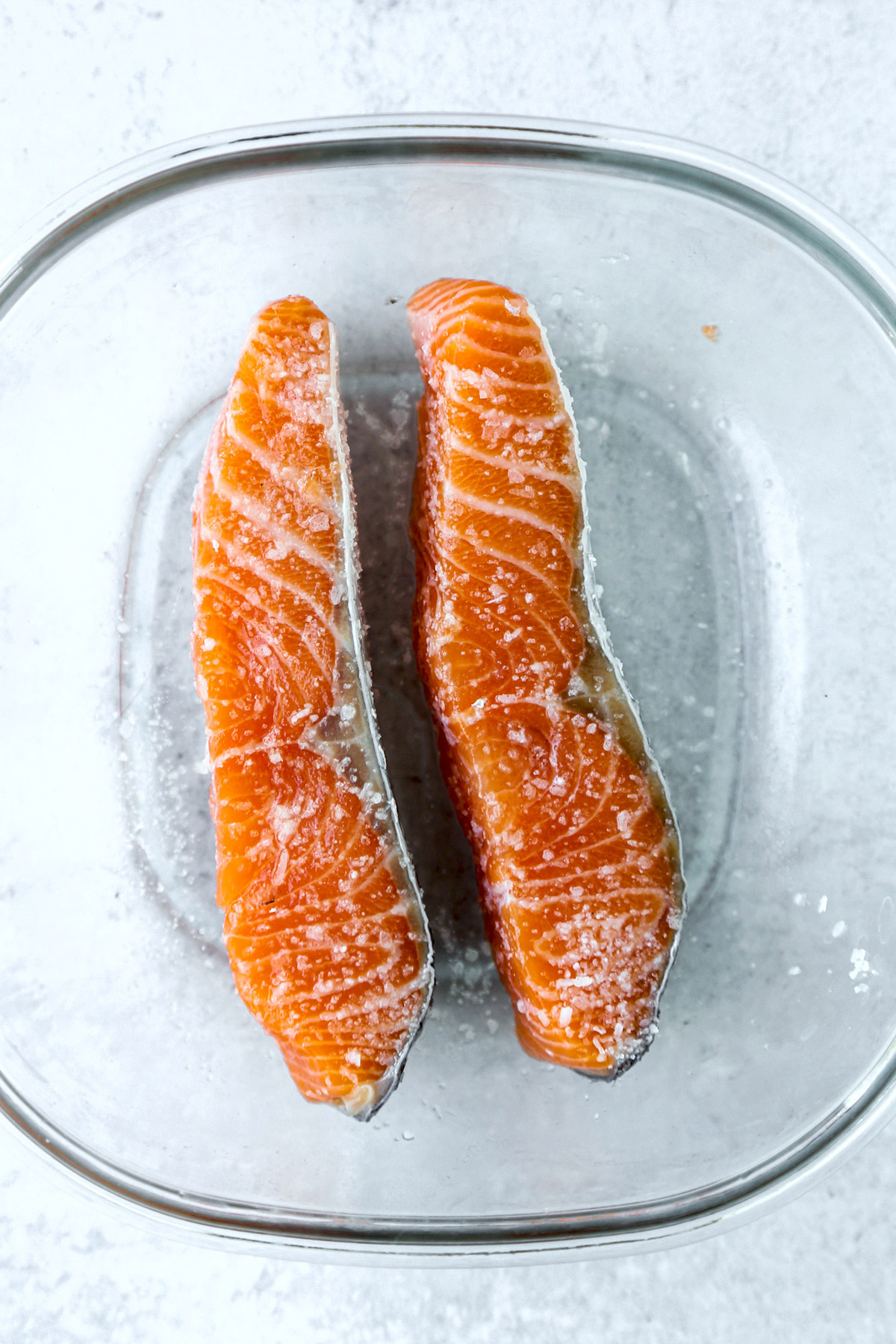
What does shiozake taste like?
There are deep savory and assertive umami notes in this shiozake recipe. And the sharpness of the sake neutralizes some of the fishiness, making this a great starting place for someone who might not be the biggest fan of fish in general.
But aside from the delicious flavor, I find that the texture of the fish itself changes due to the hours spent salt brining in the refrigerator.
The finished product is both tender and flakey – with an outer skin that is crispy and practically candied once cooked.
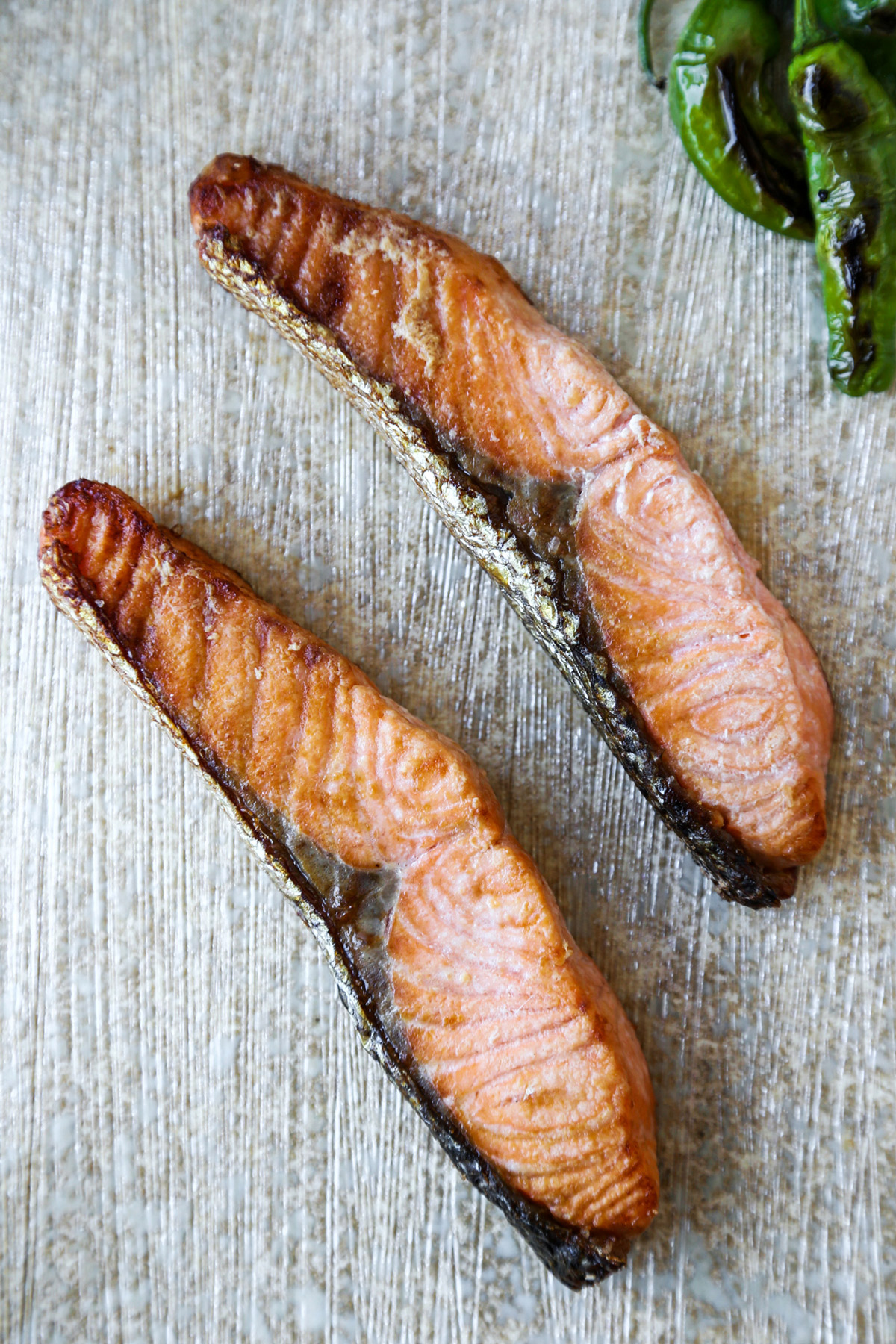
What to serve with shiozake
Shiozake is most commonly served alongside Japanese breakfast favorites like miso soup, steamed short-grain rice and pickled vegetables.
My mother loves to eat salted salmon with grated daikon radish and a tiny bit of soy sauce and lemon juice.
And shiozake makes an excellent addition to bento boxes (the famous packed meals you find in grocery stores and konbinis across Japan).
Japanese Salted Salmon Uses
But aside from the usual suspects – shiozake can be used as a ready-made filling for onigiri (Japanese rice balls) – or as a topping for a warming, comforting bowl of ochazuke.
How do you enjoy salmon at your place? Let me know about your favorites in the comments section below!
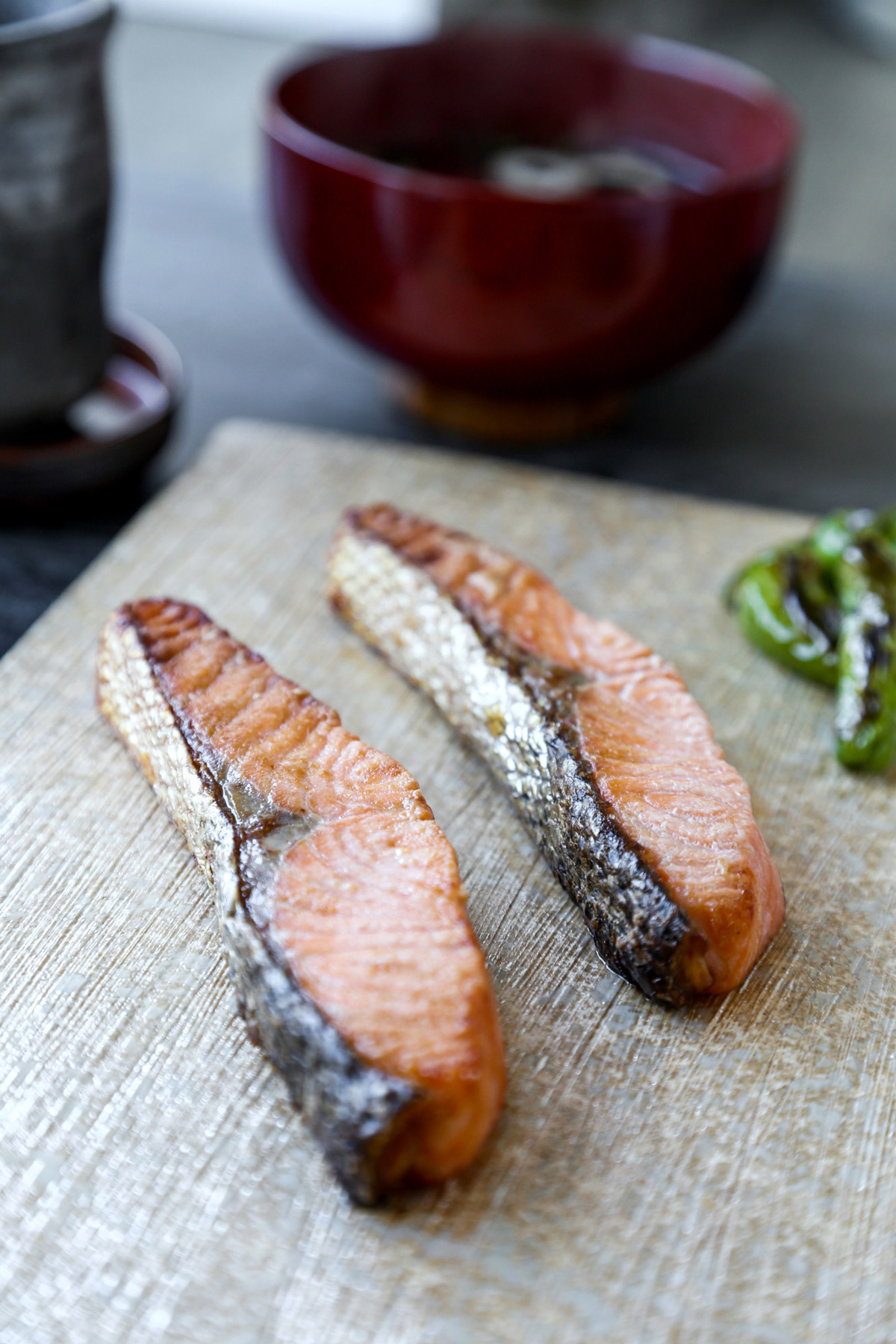
TABLEWARE
Like some of the tableware in this post? They are available at Musubi Kiln.
Musubi Kiln is an online store specializing in high quality handmade Japanese tableware and dinnerware. Each product is made by Japanese craftsmen using traditional techniques that have been passed down from generation to generation.
Received 10% off your purchase when using the code CAROLINE at checkout.
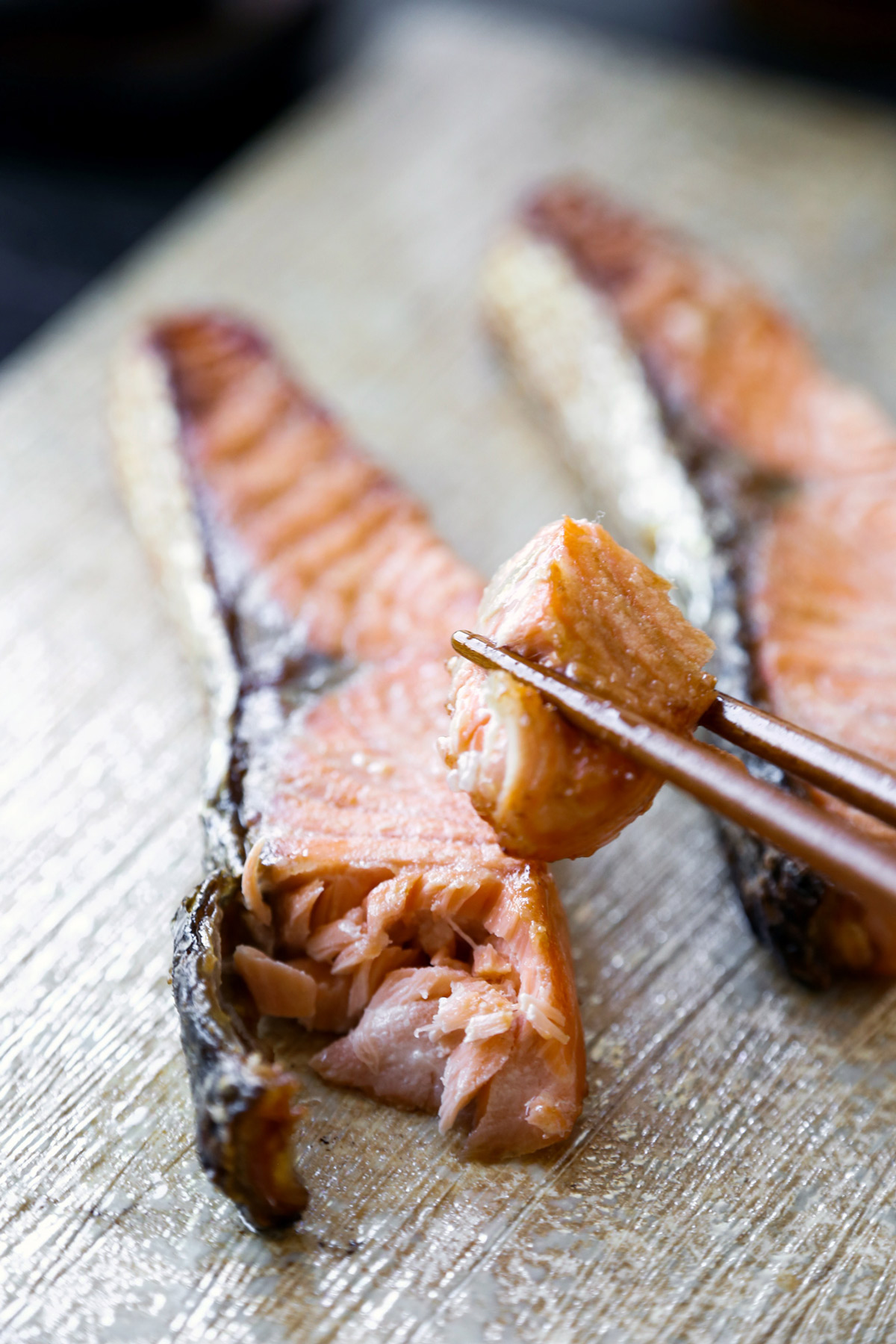
Other Delicious and Easy Japanese Recipes
Want to cook more Japanese food at home? Try one of these easy recipes.
Here are a few reader favorites:
Subscribe to my newsletter and receive the latest recipes and weekly favorites straight to your inbox. Join me on Pinterest, Facebook, and Instagram for more cooking tips and adventures!
Did you like this recipe? Are there changes you made that you would like to share? Share your tips and recommendations in the comments section below!
Print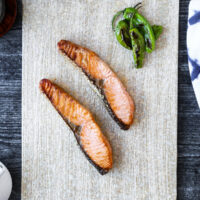
Japanese Salted Salmon (Shiozake)
- Prep Time: 5 minutes
- Passive Time: 12 hours
- Cook Time: 8 minutes
- Total Time: 12 hours 13 minutes
- Yield: 2 salmon fillets
- Category: Fish
- Method: Broiling
- Cuisine: Japanese
- Diet: Low Calorie
Description
Make this Japanese salted salmon a part of your traditional Japanese breakfast, or serve in onigiri (rice balls) or as the main protein in bento!
Ingredients
- Two 8-ounce boneless salmon fillets with the skin on
- 1 teaspoon sake
- 1 1/2 teaspoon kosher salt or 3/4 teaspoon regular table salt
Instructions
- Place the salmon fillets in a glass container and pour the sake over the fish. Grab each fillet and using your fingers, gently massage the sake into the flesh to coat evenly.
- Leave for 5 minutes and pat the fillets dry with a paper towel.
- Sprinkle equal amounts of salt on the fillets, on both sides including the skin.
- Cover with a lid and refrigerate for a minimum of 12 hours, up to 36 hours.
- Cover a baking sheet with non-stick foil and lay the salmon fillets on top.
- Move one oven rack so that it sits right under the broiler.
- Turn the broiler on and place the baking sheet on the rack.
- Broil for 3 to 5 minutes on each side, until the skin turns slightly brown and the skin is crispy.
- Serve with cooked Japanese rice, miso soup, and tsukemono.
Notes
Shiozake will keep in the fridge for up to 2 days, stored in a storage container.
Nutrition
- Serving Size: 1 salmon fillet
- Calories: 167
- Sugar: 0g
- Sodium: 1027.5mg
- Fat: 5.9g
- Saturated Fat: 1g
- Unsaturated Fat: 1.4g
- Trans Fat: 0g
- Carbohydrates: 0.1g
- Fiber: 0g
- Protein: 27.8g
- Cholesterol: 63.8mg
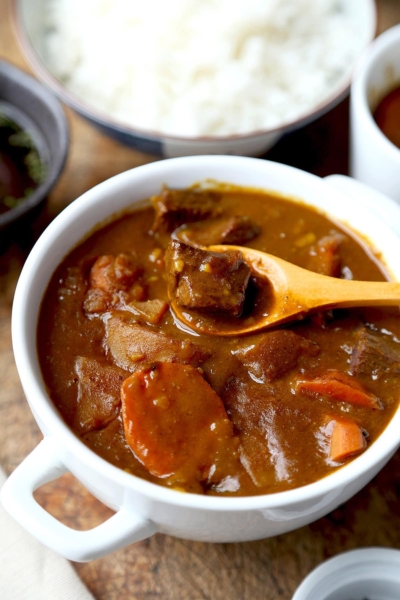
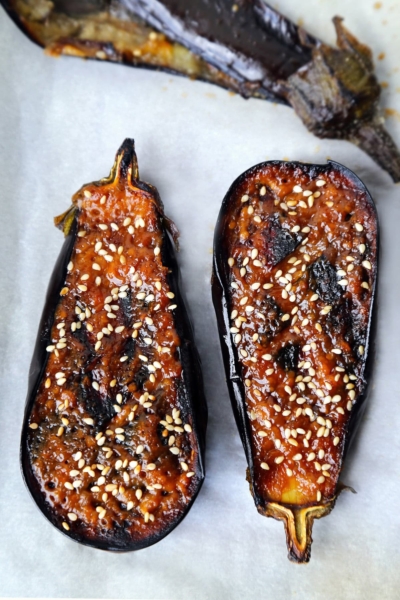
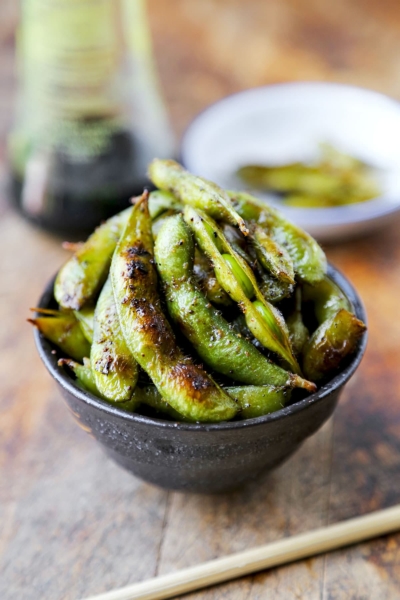
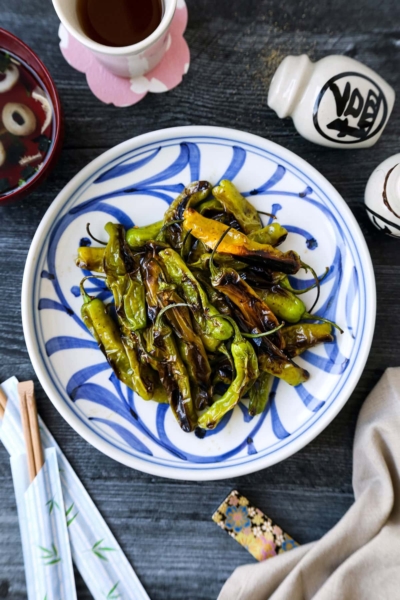


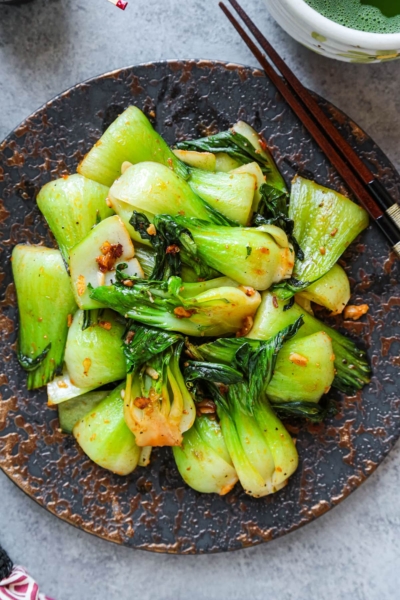
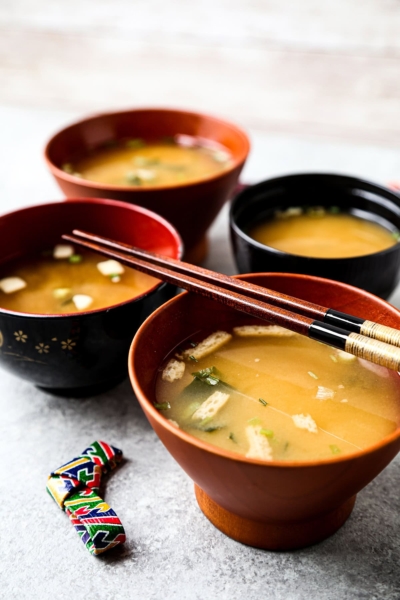
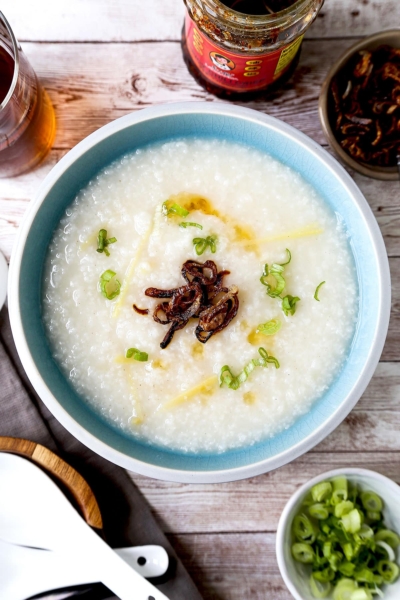
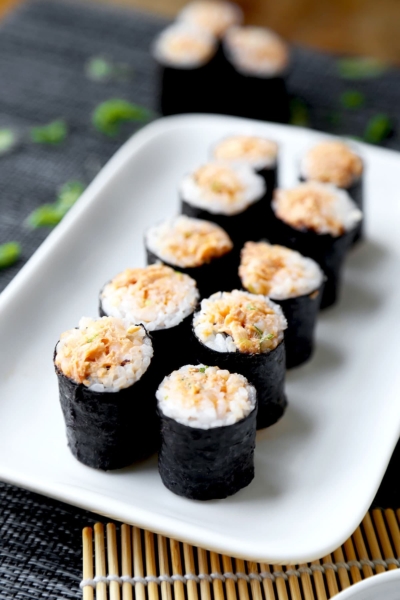








Questions and Reviews
Just made this for myself. My grandmother still makes this for me but when I try to get some of her recipes it’s always “ a little of this a little of that” and almost always the ingredients aren’t in the original bottles.